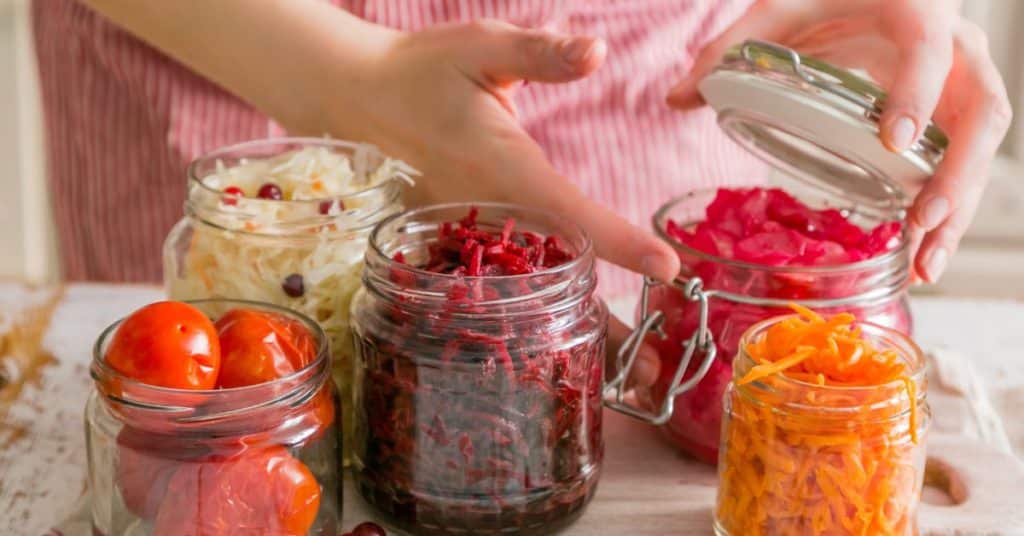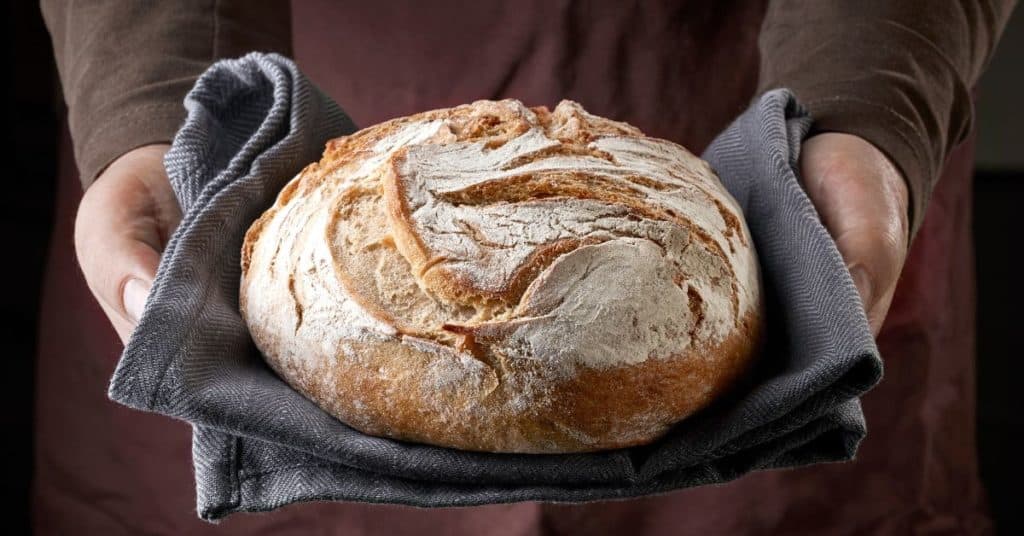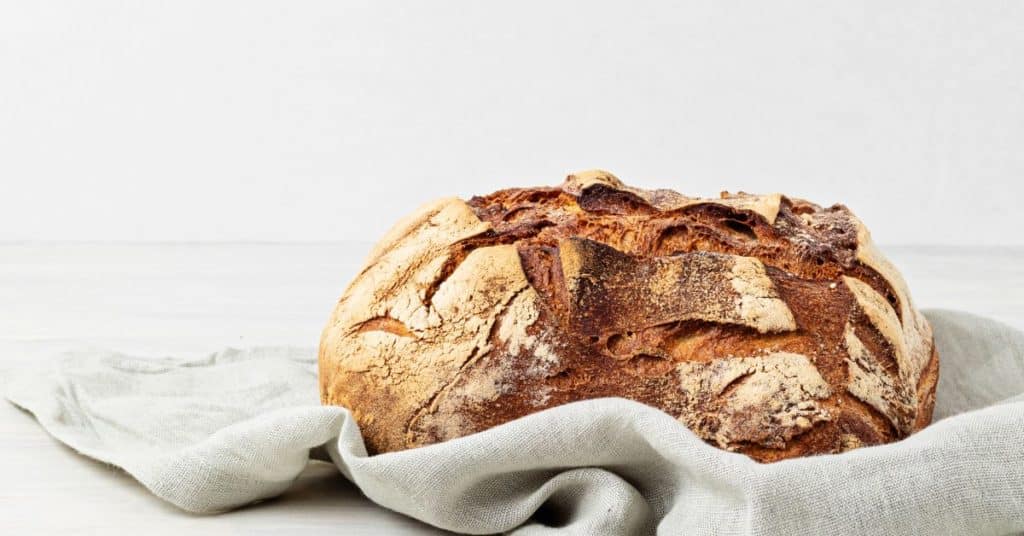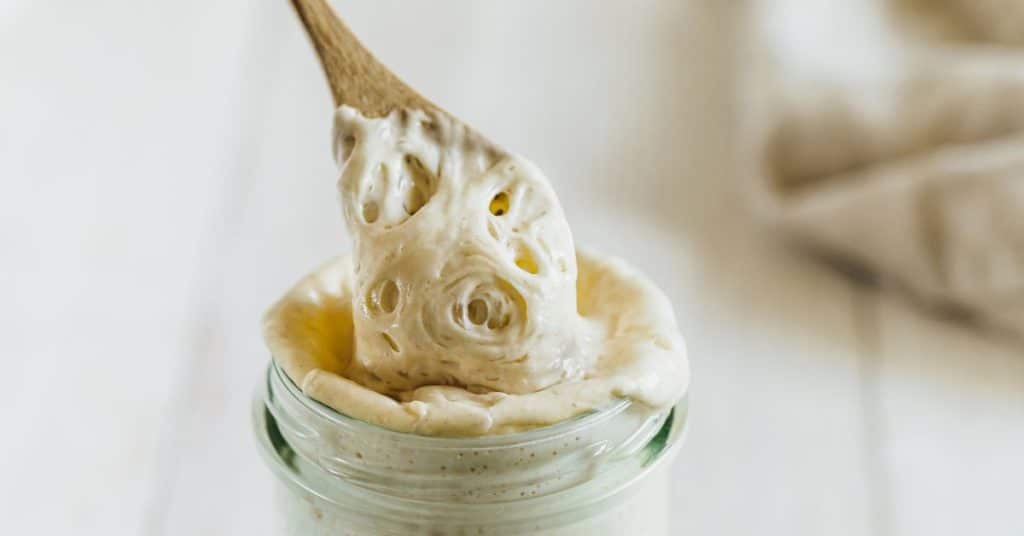
Fermentation is a tradition
In past generations, pickling vegetables was as common as frying foods. Mubby, my southern grandmother, preserved okra, corn, watermelon, beets, cucumbers, cranberries, apricots, and green beans. All fruits and vegetables produced at the family farm were subject to her pickling prowess. Homemade “pickling” that included a culture, salt and water produced a product that was not only pickled but also fermented. Fermentation occurs when bacteria and enzymes convert carbohydrates into organic acids or alcohol. This form of preservation is more advantageous than the standard pickling which involves an acid such as vinegar. The fermentation tradition is integral to the preservation of home grown produce. This technique allowed Mubby to serve fruits and vegetables year-round. And there are a lot of benefits to fermented foods… including kefir, sauerkraut and sourdough bread.

The Benefits of Sourdough Bread and Other Fermented Foods
Good bacteria protect against illness
The good bacteria found in Mubby’s mason jars provided protection against illness. These good bacteria serve as the first line of defense against bad bacteria, inflammation, and gastrointestinal distress. Instead of an apple a day, we should be chanting “one to two fermented foods a day, keeps the doctor away.” With any dietary practice, moderation is key. These foods are nutrient dense offering a multitude of good bacterial agents in just a spoonful. It is also beneficial to consume a variety of fermented products to develop a broad spectrum of bacterial agents. A person’s diet should not rely solely on the probiotics in any one fermented food. Think fermented vegetables, fermented fruits, fermented dairy, fermented condiments, fermented beverages and even sourdough bread. Yes, carbohydrates are not bad and can also be a source of probiotics.
Sourdough bread supports our gut health
Traditional sourdough is made with wheat flour, water and salt. And, sourdough bread can be easily converted to a gluten free recipe for those with gluten intolerances. You can reap the nutritional benefits of sourdough whether you eat gluten or not. In fact, the gluten free version is easier to make than the traditional wheat-based starter. The bacteria found in sourdough bread support your body’s microbiome. This type of food, like other fermented foods, is a gentle way to support your gut health. (Keep in mind, over the counter supplements are typically a more concentrated source of bacteria which may cause stomach upset and dysbiosis. These negative side effects are less likely when consuming bacteria through naturally fermented foods.)

Sourdough bread is nutrient dense
Bacteria isn’t the only benefit found in sourdough. It also includes prebiotics which serve as the food source for the bacteria. These indigestible fibers likely help the individual digest the food. Sourdough offers more than just bacteria and fiber. It is a nutrient dense food including amino acids (the building blocks of protein), B vitamins, selenium and iron. The best part is that studies note that these nutrients have greater bioavailability compared to their non-fermented wheat bread counterparts (1). Besides the nutrients found within the food, a healthy gut will increase the absorption of nutrients found in other foods including magnesium and zinc. There is additional data that the lactic-acid bacteria found in sourdough bread may reduce inflammatory responses found in people suffering from allergies and autoimmune conditions (2). Unlike other bread products which are loaded with added sugars and have limited amounts of fiber, sourdough bread has a lower glycemic index and glycemic load. This means the blood sugar level rises slower and remains lower than those food items with high glycemic load and index. The fermentation process aids in this beneficial response.
How can you gain the benefits of sourdough bread?
Fermenting at home is simple but does require time and a few essential ingredients. For those who want to reap the benefits without the preparation process, go to your local health food store. You will find a variety of ready to eat or ready to drink fermented foods: sauerkraut, kimchi, beets, onions, yogurt, cottage cheese, chutney, hot sauce, kombucha, kefir and sourdough. Top grade products will be identified as fermented and organic or non-GMO. Avoid pasteurized foods because they will not have the live bacteria which benefit the gut microbiome. However, if you want to save some money and practice the art of cooking, you can easily implement fermentation at home. I think the best place to start is sourdough. Afterall, who doesn’t like a piece of toasted or warm bread with butter or olive oil? This process will also teach you patience and make you grateful for the final product.

Making Sourdough Bread at Home
The key to sourdough bread making is allowing the flour and water to work together to produce microbes and ferment. It is this process that provides the sour flavor and light spongy texture of sourdough. Sourdough bread making is a commitment. The starter will take anywhere between 5 to 10 days to prepare. However, once you make the starter, you can continue to use it and grow it for future loaves, rolls, waffles, etc. With the starter on hand, it is always available for a scheduled baking session or impromptu bake off. The starter can live in the kitchen and be perceived as a household pet. Don’t forget to name it! I have tried a variety of recipes and even taken sourdough cooking classes. See below the simplest method behind homemade gluten free, dairy free sourdough bread.

Gluten Free Sourdough Recipe
Prepare the Sourdough Starter
DAY 1
In the evening, combine ½ cup of gluten free four and ½ cup of filtered water in a glass jar. I use an oversized mason jar (at least 24 oz jar) with a plastic lid. Stir until combined. Cover jar and leave on the counter overnight.
DAY 2
In the morning, add ½ cup gluten free flour and ½ cup filtered water to the original mixture. Stir to combine. Cover and let rest. Repeat the process in the evening on the same day.
DAY 3
In the morning, add ½ cup gluten free flour and ½ cup filtered water to the original mixture. Stir to combine. Cover and let rest. Repeat the process in the evening on the same day. (You will start to see liquid and bubbles form. Feel free to pour off the excess liquid or stir into the mixture.)
DAY 4
In the morning, add ½ cup gluten free flour and ½ cup filtered water to the original mixture. Stir to combine. Cover and let rest. Repeat the process in the evening on the same day. (If the bubbles start to disappear, add an additional midday feeding.)
DAY 5-7
This process can continue for as many as 7 days. The starter is ready for baking when it has a lot of bubbles and it rises 1/3 up the jar, 4 hours after feeding.

Making Gluten Free Sourdough Bread from Starter
Ingredients
- ½ cup sourdough starter
- 2 Tbsp + 2 tsp room temperature filtered water
- 1 egg
- 1 cup gluten free flour blend (I recommend Measure for Measure or Cup for Cup brands)
- 1 Tbsp honey
- ¼ Tbsp salt
- 1 Tbsp + 1 tsp oil
Instructions
- Whisk together the sourdough starter, water and egg.
- In a separate large bowl, mix the dry ingredients (flour blend and salt)
- Stir in the honey and oil into the dry ingredients until well combined.
- Pour the wet ingredients into the flour, oil and honey mixture. Form into a round ball.
- Cover the bowl with a flour sack towel and let it sit for 6-8 hours.
- Cut out a piece of parchment paper to fit in the bottom of a dutch oven. Set parchment paper aside.
- Preheat the oven to 425F with the covered dutch oven inside.
- Place the sourdough bread boule on the parchment paper and score the top of the loaf. Open oven and place the boule inside dutch oven. Bake covered for 30 minutes.
- Reduce the temperature to 400F, uncover and bake for an additional 20 minutes. The crust will be a light golden brown.
- Remove from the oven and place boule on a cooling rack for about 2 hours. It’s ready to slice when it cools completely.
Final Words on the Benefits of Sourdough Bread and Fermented Foods
If you’ve made it this far, then I hope I’ve piqued your interest on this topic. There are many benefits to sourdough bread and other fermented foods, including improved gut health, reduced inflammation, an increase in good bacteria, protection against illness, and added nutrients. You can easily add sourdough bread into your diet by purchasing it at your local grocer or bakery, but it’s more fun to make it at home. If you’re looking for a great gluten free sourdough starter or bread recipe, I’ve provided you with my very own. Happy eating and happy baking!
Sources

